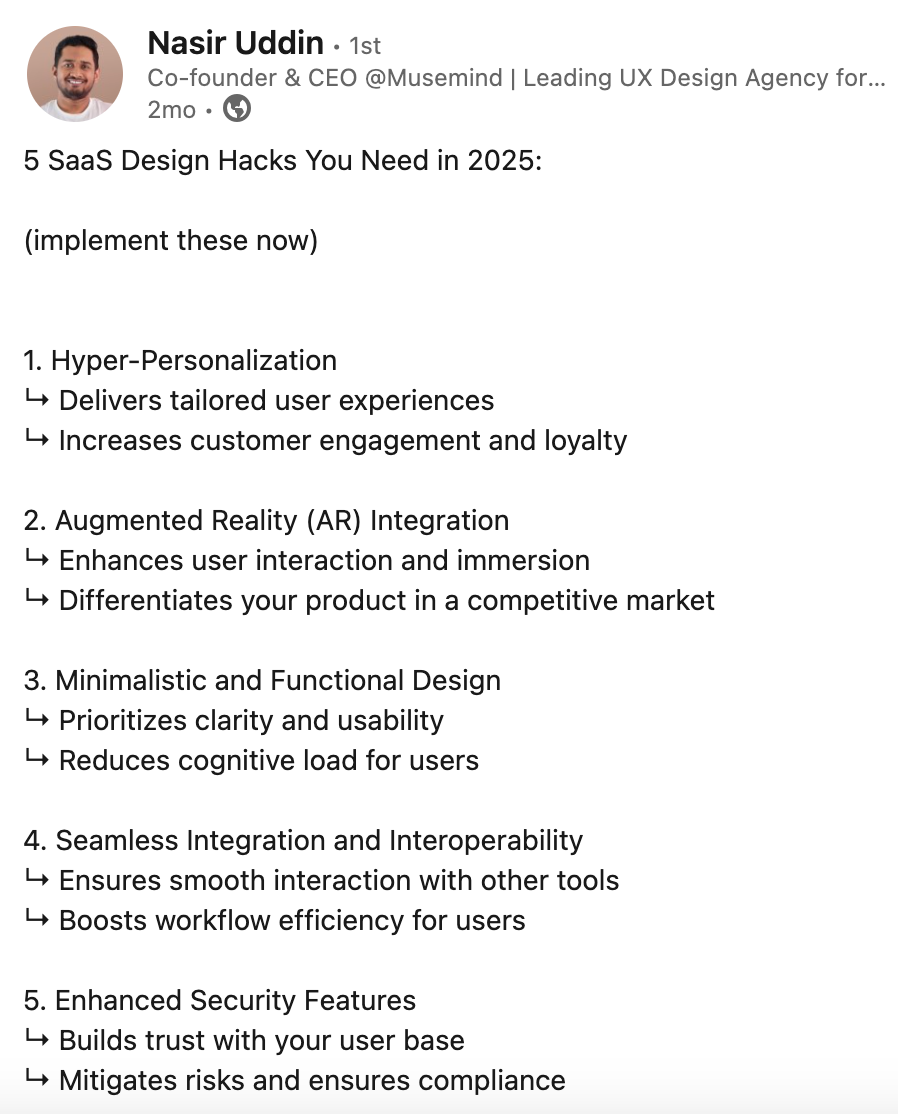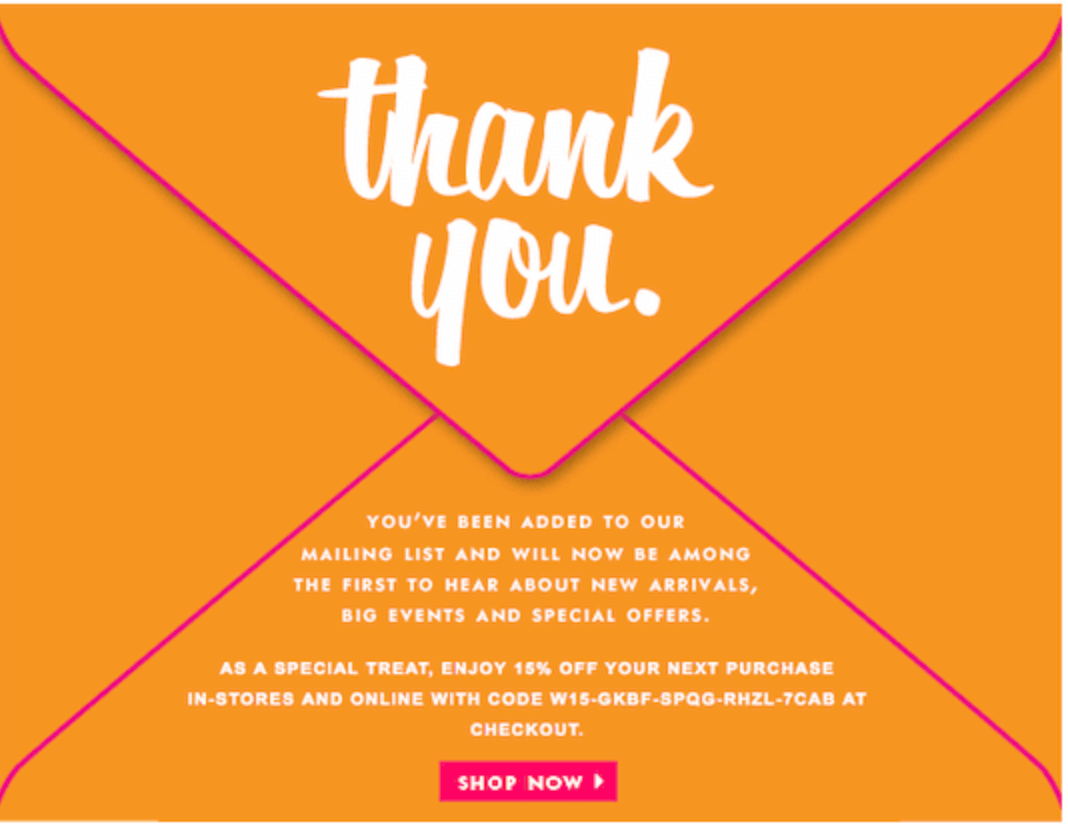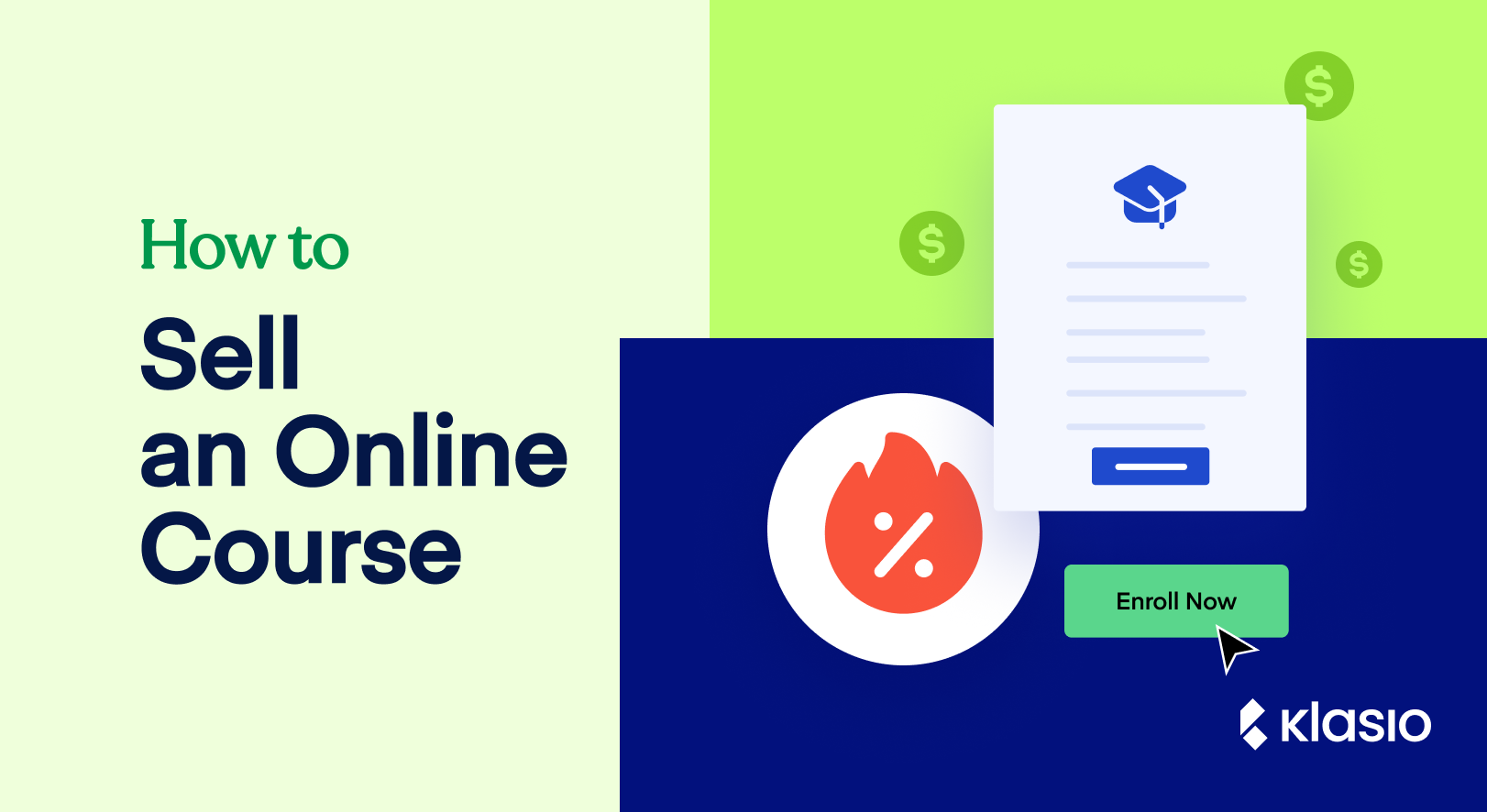Selling courses online is one of the most common ways to earn a steady stream of passive income. However, not everyone can succeed in this business.
That said, some people still make millions of dollars teaching people online. Ever wondered how they do it?
In this article, we will show you how to sell an online course that has the potential to bring you millions of dollars.
How Profitable Is Selling Online Courses?
Selling online courses can be very profitable if you do it right. Sure, it’s super popular right now, and many people are doing it. But that doesn’t mean it’s too late.
For example, the average monthly income of a successful online course creator is $1,000-$10,000. And the top 10 or 20% of the course creators earn over six figures per month.
Also, according to Statista, revenue in the e-learning industry will reach $203.81 billion this year.
So yes, statistically, selling online courses is super profitable. But there’s a catch.
Since everyone is selling courses to make a buck, it will be hard for you to get noticed among so many other course creators.
The key is not what you are selling but how you are selling it.
How to Sell an Online Course: Step-by-Step Guide
Here are the steps to selling an online course that can bring you millions–
Step 01: Research Your Target Audience
Understanding your target audience means figuring out who your ideal students are, what they struggle with, and what they truly want. Without knowing your audience’s pain points, goals, or preferences, you risk creating something that misses the mark.
Here’s how you can research and find your target audience-
- Engage with your potential audience through surveys, social media polls, or one-on-one interviews.
- Analyze forums, Reddit threads, and LinkedIn groups where your ideal students spend time.
- Use keyword research, such as Google Trends, to track online behavior, search trends, and conversations about your course topic.
- Study competitors to find out how they are solving their audiences’ problems and how you can improve on that.
- Build detailed buyer personas to humanize your audience and guide course creation.
- Research and develop continuously by reviewing data and feedback.
Step 02: Choose the Right LMS Platform
A learning management system is an essential tool for hosting and delivering your courses to your students. Choosing the right LMS platform is critical because the platform you pick directly impacts how you manage, market, and sell your courses.
If your platform lacks essential features like live support or gamification, you will struggle to stand out and meet your students’ expectations. Also, poorly designed platforms with clunky interfaces will frustrate users, harming your reputation.
Step 03: Build a Sales Page
After choosing your platform, you will need to build a landing page to attract your potential students.
Now, the platform you have chosen will help you a great deal in creating that sales page. So, if you don’t have any experience creating a sales page, don’t worry too much.

However, here are some things you need to get right while making a landing page for your course-
- Write a killer headline to hook your audience in seconds. For example, “Speak Like a CEO: Master Public Speaking in 30 Days (Even If You Hate Your Own Voice)”
- While writing the content for your landing page, always remember to sell the benefit, not the feature. For example, instead of “Get Certified in Digital Marketing”, write “Land 5 High-Paying Clients in 90 Days.”
- Add testimonials, case studies, and logos of clients/media features to build trust.
- If this is your first-ever course and you don’t have social proof, you can partner with micro-influencers.
- Use phrases like “Limited Time Offer” to induce a fear of missing out.
- Try different CTAs, headlines, or layouts to improve conversion rates.
- Since most of your potential customers will be visiting from mobile phones, make sure to optimize for mobile devices.
Step 04: Organic Marketing
Organic Marketing is the slow but steady game of growing your audience without spending a huge amount of money. But the catch is that you need to plan, prepare, and continuously put in a lot of effort.
Organic marketing has multiple aspects you need to focus on, such as
Content Marketing
Content marketing is the art of attracting and nurturing your audience by delivering value first through different types of content. For example, blogs, videos, podcasts, or social posts.
When you provide your audiences with value, they see you as the go-to expert before you even pitch your course. Content marketing is not about selling but building trust and authority.
Here’s how you can use content marketing for your course:
- Target keywords your ideal students are Googling (“how to start a freelance business with no experience”).
- Create a free resource, like a tutorial or a blog, on the keywords you have found.
- Repurpose the main content into different types of content. For example, the blog can be turned into a YouTube video, a social post, a newsletter, etc.
- Create a buyer’s journey through the content you create.
- Offer these contents for free in exchange for an email.
- Double down on formats/platforms where your content gets shares, saves, or comments.
Email Marketing
Thanks to your content marketing efforts, you should have a decent list of emails from people who are interested in the topics. By sending emails to those people, you can get them interested in your course.
Here’s how you can do it-
- Automate 3-5 emails that introduce yourself, share free value (tips, templates), and hint at your course.
- Teach something quick and actionable (e.g., “Here’s how I saved 10 hours/week using this tool”).
- Tag people who click links or open emails—send hotter leads and more frequent pitches.
- Use stories over sales pitches. For example, “One student doubled her income in 3 months—here’s how” works better than “Buy my course!”
- Use FOMO (fear of missing out) tactics. For example, “Last 10 spots at $997” or “Bonus ends Friday” promotes action.
- Keep the subject lines short, punchy, and curious. For example, “The mistake 90% of beginners make” or “Your shortcut to a million dollars”.
Social Media Marketing
Since most of your potential students will be on different social media platforms, you need to put a decent amount of effort into the socials. By engaging with your audiences through social media, you can increase your brand awareness and reputation, which will contribute to your sales.
Here’s how you should approach social media marketing-
- Focus on 2 or 3 platforms where your potential audience hangs out the most.
- Post consistently; make a content calendar and strictly follow it.
- Use hooks in your content. For example, start posts with “I wish I knew this sooner” or “90% of people get this wrong”.

- Be active; react and comment on people’s posts. Also, reply to the comments on your posts.
- Do not post or comment on generic AI-generated content.
Step 05: Paid Marketing
While organic marketing focuses on steady, long-term growth, paid marketing can give you short bursts of exposure and sales through ad campaigns. When you combine paid and organic marketing strategies, you get both long-term, sustainable results and a boost in sales.
Anyway, here’s how you can implement paid marketing strategies-
- Run low-budget ads ($5-10/day) on platforms like Facebook, Instagram, or Google Ads to test the water.
- Use ad copy that voices their struggles. For example, “Tired of trading time for money? This course teaches 6 passive income streams”.
- Once you have buyers, clone their traits to target similar high-potential users.
- Use reels to promote your course benefits.
- Retarget people who clicked your sales page but didn’t buy with follow-up ads.
- Try different headlines, images, or CTAs to improve results.
- Create a fixed budget, spend more on top-performing ads, but cap daily spending to avoid algorithm burnout.
Step 06: Partnerships and Collaboration
Partnerships and collaborations mean teaming up with influencers, brands, or experts in your niche to promote your course to their audience. It’s important because you tap into the trust they’ve already built.
How to partner up with influencers and affiliates:
- Look for influencers, bloggers, or businesses whose followers need your course. If you are just starting, you can partner with nano-influencers (1k-10k followers) who have hyper-engaged fans and charge less.
- Give them free course access, affiliate commissions, or co-create content.
- Pitch yourself for podcasts, summits, or live events where their audience hangs out.
- Let affiliates earn commissions for promoting your course.
- See which partners drive clicks/sales and double down on them.
Step 07: Post-sale Marketing
Up until now, we have only focused on how to sell your courses online. But in this step, we will talk about what to do after your customer buys from you.
Post-sale marketing is all about keeping customers happy after they’ve bought something. Instead of just focusing on getting new customers, it’s about building lasting relationships with existing ones. This helps turn one-time buyers into repeat customers and even fans who recommend your brand to others.
How to use post-sale marketing to your advantage:
- Send automated “Thank you” emails after a purchase.

- Welcome your customers with a great onboarding experience.
- Offer advanced courses, coaching, or tools after they finish the core program.
- Create a community with your customers, where you can connect with them and they can connect with each other.
- Ask them for feedback on how you can improve and what else you can do for them.
- Offer referrals to your customers and turn them into your affiliates.
- Turn top students’ results into case studies, social proof ads, or podcast interviews.
5 Tips for Making Sustainable Profit By Selling Online Courses
Here are five additional tips that will help you earn even more money.
Tip 01: Build Your Course in Public
Share your course creation journey on social media, blogs, or newsletters. This creates anticipation and a sense of ownership among your audience, which makes them more likely to enroll.
Publicly showcasing your expertise also positions you as a credible authority. For example, host live Q&A sessions about your course topic or share mini-lessons.
By involving your audience early, you’ll refine your course based on real needs, reduce guesswork, and foster a community invested in your success.
Tip 02: Make Your Course Affordable
There is a common misconception about course pricing is that making your course premium will get you more students and earn you more money. Premium pricing works for some creators, but it can limit your audience. Making your course more affordable helps you reach more people, especially beginners.

So, you should try to offer multiple pricing options to accommodate different budgets. Consider allowing your students to pay in installments or monthly subscription-based payments, which makes the course more affordable.
.
Tip 03: Make Your Course Short But High-Value
Instead of creating hour-long lessons, design bite-sized modules that are focused on immediate value. Don’t add fluff or generic content; rather, stick to practical steps, templates, or frameworks.
For example, a 4-hour course on “Instagram Growth” with checklists is more likely to sell better than a 20-hour theoretical marathon.
High value doesn’t mean lengthy; it means solving a specific problem efficiently. Shorter courses also reduce production time, letting you launch faster and perform based on feedback.
Tip 04: Use the 80-20 Rule
Focus on the 20% of content that delivers 80% of results. Identify core skills or concepts that yield maximum impact for learners.
For example, in a photography course, prioritize lighting and composition over camera technicalities.
To get this right, you can survey your audience to pinpoint their biggest pain points. Design your curriculum to address these directly, while avoiding overcomplicated theories.
Tip 05: Connect With Your Students
Don’t just forget your students after they buy from you. Connect with them to provide more value so that they become your mouthpieces.

For instance, you can host live Zoom sessions to offer personalized feedback on assignments. Or, take extra care of students who struggling by giving them a 1:1 session.
FAQs
Can you make a living selling courses?
Yes, you can make a living selling online courses. However, success depends on factors like niche demand, course quality, and effective marketing. Many creators earn full-time incomes by focusing on evergreen topics, building loyal audiences, and leveraging scalable platforms.
Do I need an LLC to sell courses online?
No, you don’t need an LLC to sell courses online. Many creators start as sole proprietors. However, forming an LLC can protect personal assets from business liabilities (e.g., lawsuits) and offer tax flexibility.
Do you need a license to sell a course?
No, you typically don’t need a specific license to sell online courses on most topics. However, requirements vary by location and niche. For example, courses in regulated fields (e.g., medical advice, financial planning) may require certifications or compliance with industry standards.
What is the success rate of online courses?
The success rate of online courses is low—only about 10-15% of creators earn a full-time income, while most generate little to no profit. Success depends on niche demand, quality, marketing, and student engagement.
What is the best platform to sell online courses for beginners?
Klasio is the best platform to sell online courses for beginners because it has a free plan that lets you create one course with 50 students. If you are someone who is completely new to the e-learning industry and would like to try creating courses, Klasio can help you do it for free.
Remember, It’s Not What You Sell. It’s How You Sell It.
Your course’s value isn’t in the content alone; it’s in how you frame it. That’s why you need to master how to tell a story and get into the minds of your potential customers.
With these two qualities combined with your high-value content, you are most likely to find success

Leave a Reply